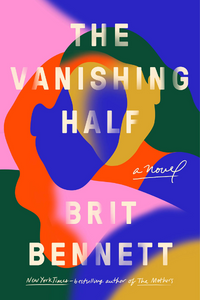In this epic, beautifully written masterwork, author Isabel Wilkerson chronicles one of the great untold stories of American history: the decades-long migration of black citizens who fled the South for northern and western cities, in search of a better life. With stunning historical detail, Wilkerson tells this story through the lives of three unique individuals. She captures their first cross-country trips by car and train and their new lives in colonies, as well as how they changed these cities and improved them with discipline, drive, and hard work.
Sara King has nothing, save for her secrets and the baby in her belly, as she boards the bus to Memphis, hoping to outrun her past in Chicago. She is welcomed with open arms by Mama Sugar, owner of the popular boardinghouse The Scarlet Poplar. Like many cities in early 1960s America, Memphis is still segregated, but change is in the air. Across the country, people like Martin Luther King Jr. are leading the fight for equal rights. The Two Lives of Sara is an emotional and unforgettable story of hope, resilience, and unexpected love.
First published in 1952 and hailed as a masterpiece, Invisible Man is one of those rare novels that have changed the shape of American literature. For not only does Ralph Ellison’s journey across the racial divide tell unparalleled truths about the nature of bigotry and its effects on both victims and perpetrators, it gives us an entirely new model of what a novel can be. As he journeys from the Deep South to the streets and basements of Harlem, Ellison’s nameless protagonist ushers readers into a parallel universe that throws our own into harsh and even hilarious relief.
Mildred Dee Brown (1905–89) was the cofounder of Nebraska’s Omaha Star, the longest running black newspaper founded by an African American woman in the United States. Known for her trademark white carnation corsage, Brown was the matriarch of Omaha’s Near North Side and an iconic city leader. Within the context of African American and women’s history studies, Forss’s Black Print with a White Carnation examines the impact of the black press through the narrative of Brown’s life and work.
Sent by their mother to live with their devout, self-sufficient grandmother in a small Southern town, Maya and her brother, Bailey, endure the ache of abandonment. At eight years old and back at her mother’s side in St. Louis, Maya is attacked by a man many times her age—and has to live with the consequences for a lifetime. Years later, in San Francisco, Maya learns that love for herself, the kindness of others, her own strong spirit, and the ideas of great authors will allow her to be free instead of imprisoned.
Fair and long-legged, independent and articulate, Janie Crawford sets out to be her own person—no mean feat for a black woman in the ’30s. Janie’s quest for identity takes her through three marriages and into a journey back to her roots. Their Eyes Were Watching God brings to life a Southern love story with the wit and pathos found only in the writing of Zora Neale Hurston. Out of print for almost thirty years, Hurston’s classic has since its 1978 reissue become perhaps the most widely read novel in the canon of African-American literature.
Cora is a slave on a cotton plantation in Georgia. Life is hell for all the slaves, but especially bad for Cora; an outcast even among her fellow Africans, she is coming into womanhood–where even greater pain awaits. When Caesar, a recent arrival from Virginia, tells her about the Underground Railroad, they decide to take a terrifying risk and escape. Like the protagonist of Gulliver’s Travels, Cora encounters different worlds at each stage of her journey–hers is an odyssey through time as well as space.
The Vignes twin sisters will always be identical. But after growing up together in a small, southern black community and running away at age sixteen, it’s not just the shape of their daily lives that is different as adults, it’s everything: their families, their communities, their racial identities. Many years later, one sister lives with her black daughter in the same southern town she once tried to escape. The other passes for white, and her white husband knows nothing of her past. Still, even separated by so many miles and just as many lies, the fates of the twins remain intertwined.
Two half-sisters, Effia and Esi, are born into different villages in eighteenth-century Ghana. Effia is married off to an Englishman and lives in comfort in the palatial rooms of Cape Coast Castle. Unbeknownst to Effia, her sister, Esi, is imprisoned beneath her in the castle’s dungeons, sold with thousands of others into the Gold Coast’s booming slave trade, and shipped off to America, where her children and grandchildren will be raised in slavery. Yaa Gyasi’s magisterial first novel sets the fate of the individual against the obliterating movements of time.













